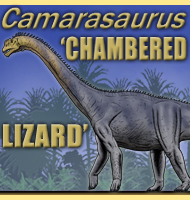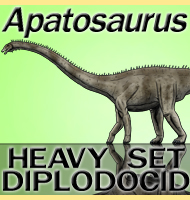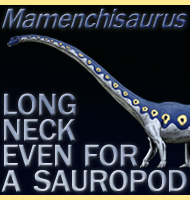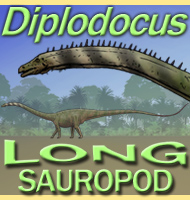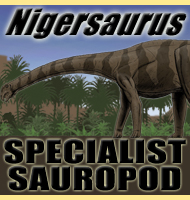


Giraffatitan
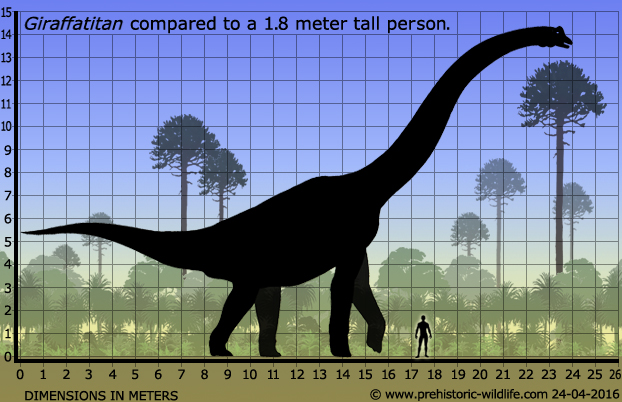
Name: Giraffatitan
(Giraffe titan).
Phonetic: Jee-raf-ah-tie-tan.
Named By: Gregory S. Paul - 1988.
Classification: Chordata, Reptilia, Dinosauria,
Saurischia, Sauropodomorpha, Sauropoda, Titanosauriformes,
Brachiosauridae.
Species: G. brancai (type).
Type: Herbivore.
Size: Approximately 26 meters long.
Known locations: Africa, Tanzania - Tendaguru
Formation.
Time period: Kimmeridgian to Tithonian of the
Jurassic.
Fossil representation: Several partial skeletons.
Giraffatitan
was originally named as an African species of Brachiosaurus.
First
named in 1914 by Werner Janensch as Brachiosaurus
brancai,
subsequent study of the fossil material would reveal several
morphological differences between B. brancai and
the Brachiosaurus
type species B. altithorax. This has led to the
modern name of
Giraffatitan, a play on the resemblance to a
giraffe. Although some
were dubious of the naming at first, a complete study published in
2009 by Michael Taylor has pointed out that while similar to
Brachiosaurus, Giraffatitan is
a completely different animal.
Although
Giraffatitian is phylogenetically different from
Brachiosaurus, it probably did have a very similar
lifestyle as a
high browser. The arrangement of spatulate teeth would have been very
efficient at cropping the soft foliage from the tops of the Jurassic
trees.
The
exact position of the nasal holes of Giraffatitian
are not known
for certain because there are no dedicated holes in the skull that
would reveal the rough size like in other animals. The nasal holes
were probably carried forward by softer tissue that did not survive the
fossilisation process. It has been thought by some that they were
supported by a mass of soft tissue.
Some
palaeontologists have suggested that the nostrils were further
forward the snout and the crest was a support for a resonating
chamber. If correct this would have amplified the calls of
Giraffatitan allowing for stronger communication
between others of the
same species, perhaps for attracting a mate, displaying herd
dominance between rivals or even keeping in touch with distant herd
members.
Further reading
- �bersicht �ber der Wirbeltierfauna der Tendaguru-Schichten nebst
einer kurzen Charakterisierung der neu aufgef�hrten Arten von
Sauropoden. - Archiv f�r Biontologie, 3 (1): 81–110. - W. Janensch -
1914.
- The brachiosaur giants of the Morrison and Tendaguru with a
description of a new subgenus, Giraffatitan, and a
comparison of the
world's largest dinosaurs. - Hunteria 2(3):1-14. - G. S. Paul - 1988.
- A Re-evaluation of Brachiosaurus altithorax Riggs
1903 (Dinosauria,
Sauropod) and its generic separation from Giraffatitan brancai
(Janensch 1914). - Journal of Vertebrate Paleontology, 29(3): 787-806.
- M. P. Taylor - 2009.
Random favourites
 |
 |
 |
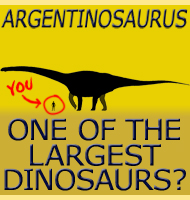
|
